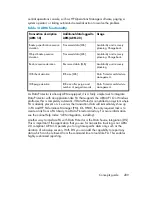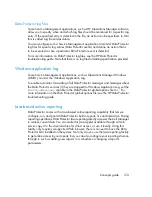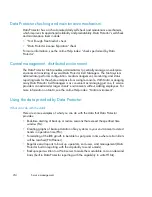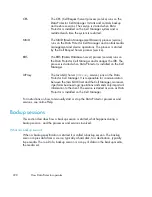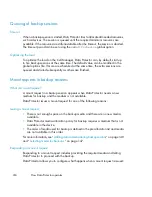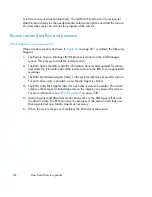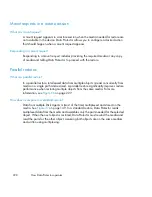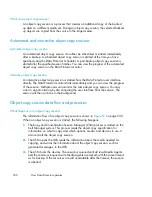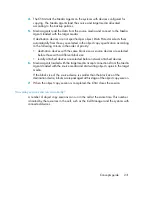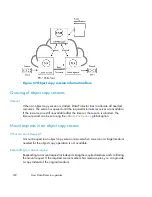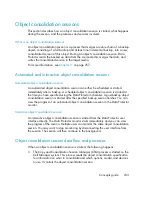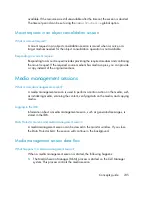
4.
The BSM starts Disk Agents (DAs) for each disk to be backed up in parallel. The
actual number of Disk Agents started depends on the concurrency of Disk Agents
configured in the backup specification. This is the number of Disk Agents that
can be started to send data in parallel to a Media Agent, thus allowing a device
to stream.
5.
Disk Agents read data from disks and send it to the Media Agents that write
data to media.
In a backup session with object mirroring, Media Agents used for writing mirrored
objects are daisy-chained. Each Media Agent writes the received data to media
and forwards it to the next Media Agent in the chain.
6.
The BSM monitors the progress of the session and starts new Disk Agents and
new Media Agents as necessary.
7.
When the backup session is completed, the BSM closes the session.
Figure 63 Backup session information flow (1)
How many sessions can run concurrently?
A number of backup sessions can run in the cell at the same time. This number is
limited by resources in the cell, such as the availability of devices and the configuration
of the Cell Manager, for instance, processor speed, main memory size, and similar.
How Data Protector operates
222
Содержание B6960-96035
Страница 17: ...Overview of backup and automated media copy sessions 340 105 Concepts guide 17 ...
Страница 20: ...20 ...
Страница 22: ...Publication history 22 ...
Страница 132: ...Planning your backup strategy 132 ...
Страница 182: ...Media management and devices 182 ...
Страница 186: ...Users and user groups 186 ...
Страница 204: ...The Data Protector internal database 204 ...
Страница 218: ...Figure 62 Direct SIP integration example Service management 218 ...
Страница 242: ...Integration with database applications 242 ...
Страница 264: ...Synthetic backup 264 ...
Страница 274: ...Split mirror concepts 274 ...
Страница 288: ...Snapshot concepts 288 ...
Страница 344: ...Further information 344 ...
Страница 402: ...Glossary 402 ...


